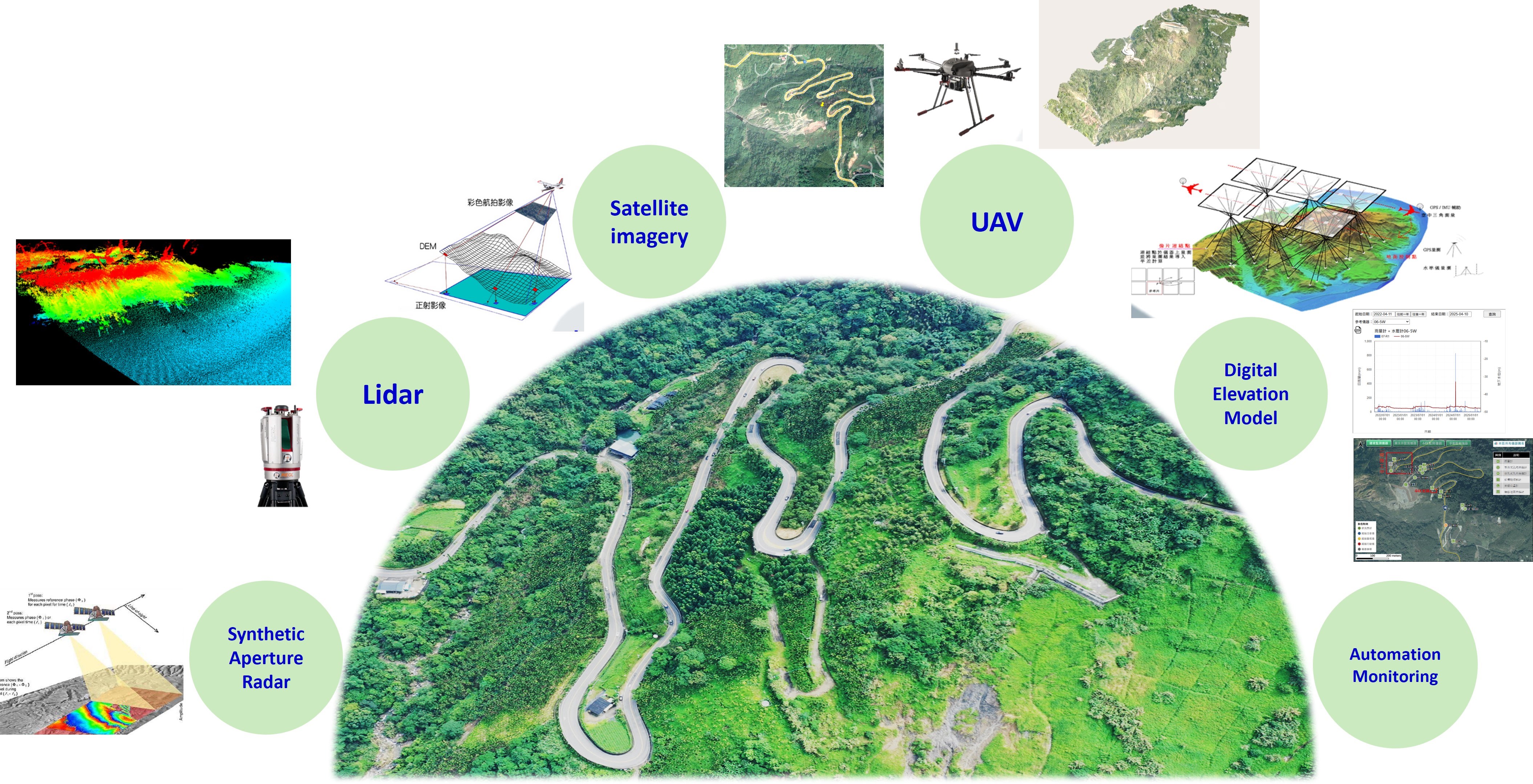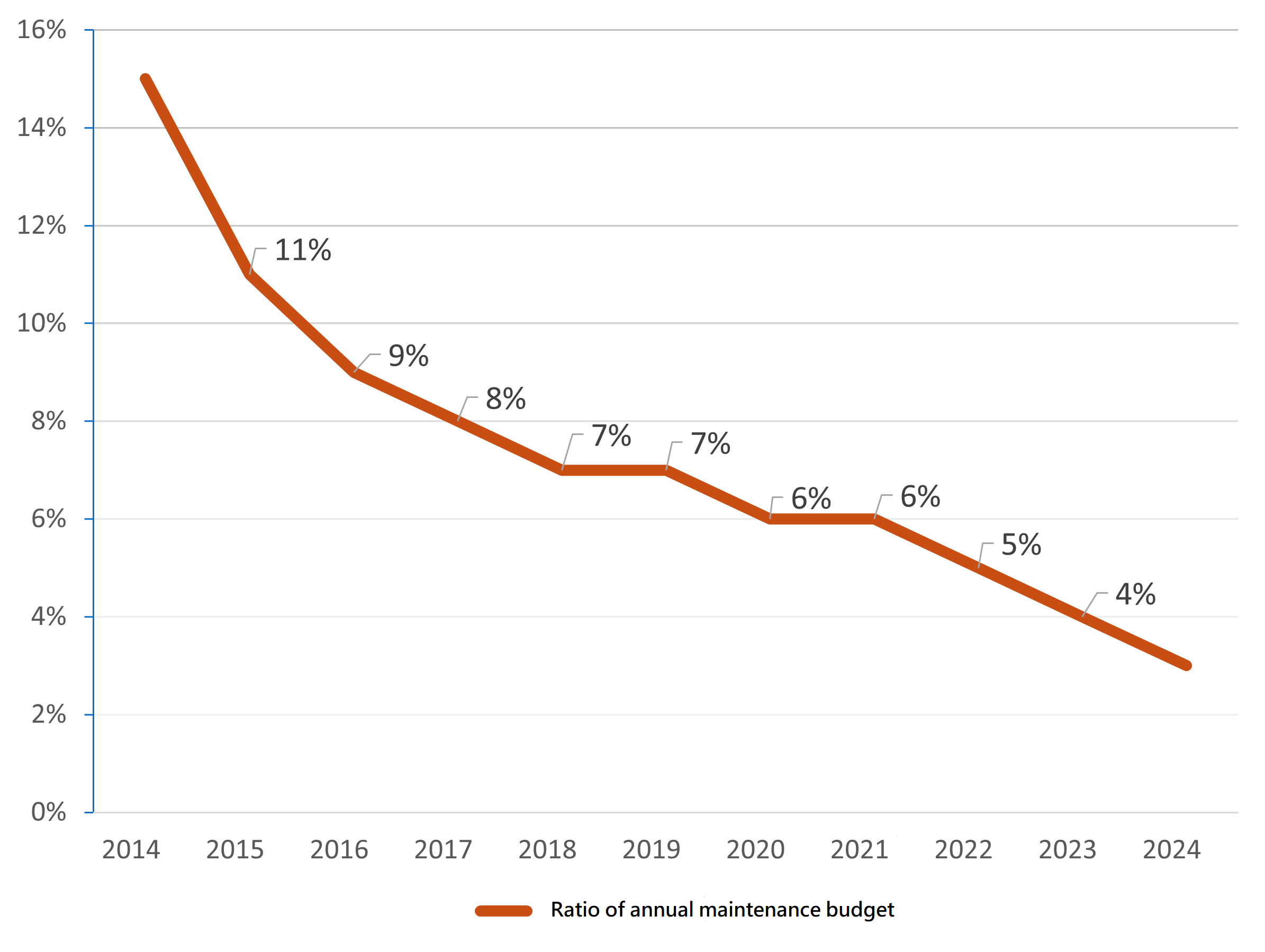Engaging Climate-Adaptation Strategies for Provincial Highway 18-proven climate-proof methodologies for resilient and scenic highways
Provincial Highway 18, also known as the Alishan Highway, is a vital scenic route in Taiwan connecting to the Alishan National Scenic Area. A specific section, Wuwantsai (markers 42-45K), characterized by steep slopes and hairpin turns, has historically been prone to severe landslides triggered by heavy rainstorms and typhoons. A major disaster occurred in June 2003, collapsing 200 meters of embankment and washing away 6 hectares of slopes. Monitoring data collected since 2000 indicated significant surface movement correlated with precipitation, especially during the rainy season and after typhoons.

Picture1 Wuwantsai (Provincial Highway 18 markers 42-45K)
The 2003 event affected over 50 hectares adjacent to Wuwantsai, necessitating urgent climate-adaptation strategies to prevent future failures. A collaboration between the Yunlin-Chiayi-Tainan Region Branch Office of the Highway Bureau (THB) and Land Engineering Consultants (LEC) spearheaded a multi-phase effort from 2003 to 2024. Initial investigations (2003-2006) involved rerouting the roadway with new hairpin turns to bypass the major collapse zone and avoid headward erosion, alongside detailed geological and hydrological analyses. These analyses revealed geological vulnerabilities, including the presence of the Tatou and Kungtien faults and fractured sandstone/shale in the landslide zone. Hydrological studies confirmed continuous headward erosion as a major collapse cause and showed underground water tables rising significantly (up to 26 meters) after typhoons.

Picture2 Landside Zone & Influence Area
Based on these findings, comprehensive climate-proof methodologies were implemented between 2007 and 2024. Effective water management was crucial, involving surface drainage networks (berms, cascade drains) and subsurface French drains to control runoff and underground water. A key component was an extensive stormwater well system, comprising eight deep wells (45-52 meters) designed to rapidly lower the underground water table and reduce pore pressure; four wells were later interconnected to enhance drainage capacity. Slopes and embankments were reinforced using prestressed anchors, piling systems, sustainable erosion protection techniques like vegetation and gabion walls, and a check dam system with reinforced earth walls at the landslide toe to halt headward erosion. Furthermore, long-term monitoring using advanced technologies like LiDAR, UAVs, and satellite imagery has tracked the project's effectiveness.

Picture3 Stormwate Well & Horizontal French Drains

Picture4 Check Dam System With Reinforced Earth Walls

Picture5 Long-term Monitoring Using Advanced Technologies
The outcomes have been highly successful. The stormwater well system proved capable of draining massive amounts of water quickly, significantly reducing the time for the underground water table to return to normal after major storms (from over 130 days to 45 days). Consequently, annual surface movement drastically decreased from 11-20 cm in 2003 to less than 2 cm post-intervention, with negligible movement even during a severe typhoon in 2024. This stabilization has prevented further major landslides, ensuring roadway integrity. The project also fostered ecosystem recovery, marked by the return of sensitive species, and revived the highway's scenic reputation, boosting local tourism. Furthermore, the annual maintenance budget for the section dropped significantly, from a 15% ratio in 2003 to 3% in 2024.

Picture6 Ratio Of Annual Maintenance Budget (2014 to 2024)